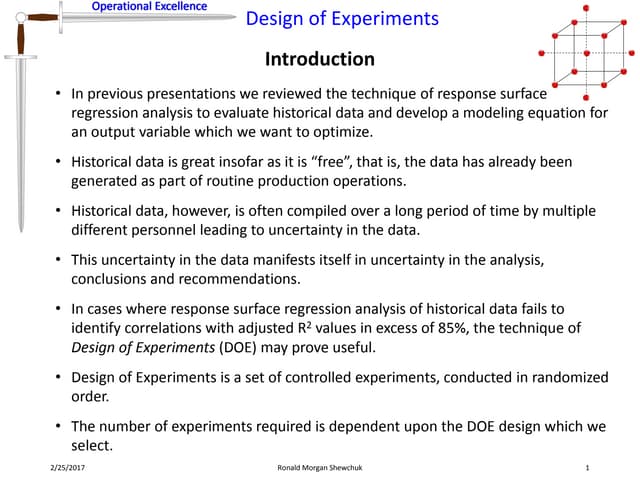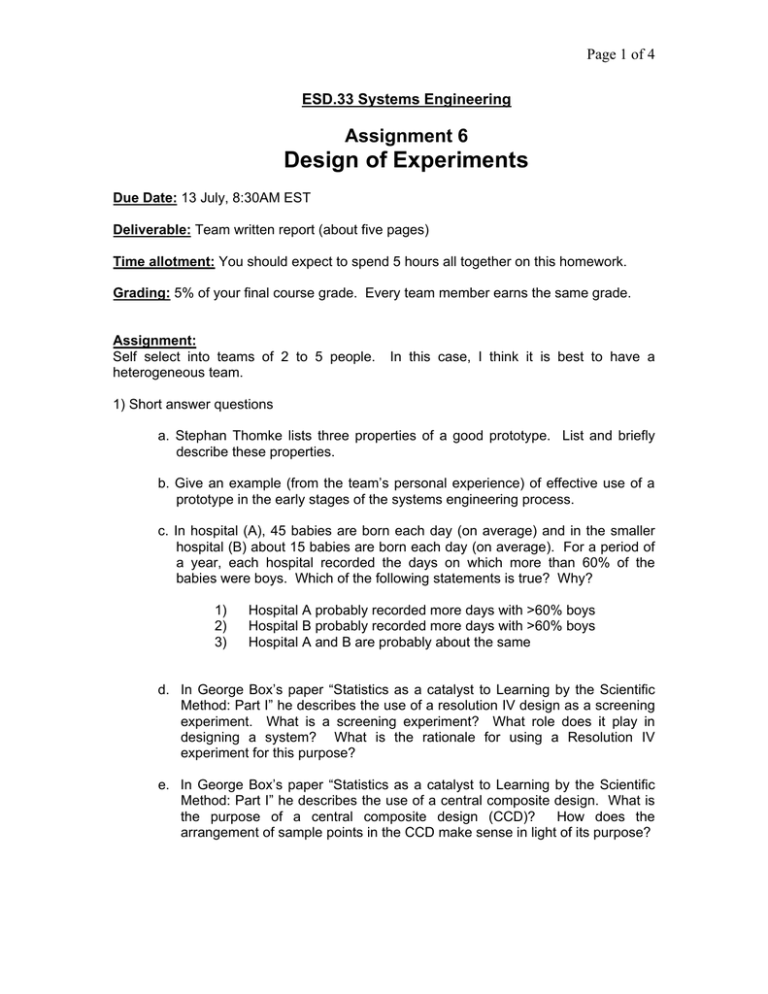Table Of Content

So, for example, first we might fix the pH at 3, and change the volume of the reaction container from a low setting of 500ml to a high of 700ml. In today's global world this drive for competitiveness affects all of us both as consumers and producers. If you’re struggling with statistics while analyzing data for your projects, this is your ultimate solution for Data Analysis! If your study system doesn’t match these criteria, there are other types of research you can use to answer your research question.
Statistical experiments, following Charles S. Peirce

Replication reinforces the integrity of the scientific method, allowing researchers to confidently attribute observed effects to the experimental conditions rather than to random variation. Within-subjects or repeated measures can also refer to an experimental design where an effect emerges over time, and individual responses are measured over time in order to measure this effect as it emerges. In a within-subjects design (also known as a repeated measures design), every individual receives each of the experimental treatments consecutively, and their responses to each treatment are measured. For valid conclusions, you also need to select a representative sample and control any extraneous variables that might influence your results. If if random assignment of participants to control and treatment groups is impossible, unethical, or highly difficult, consider an observational study instead.
Process Improvement
They ensure that experiments designed are technically sound, ethically grounded, and philosophically aligned with pursuing a deeper understanding of the world. If we categorize our subjects by gender, how should we allocate our drugs to our subjects? Let's make it easy and say that there are 10 male and 10 female subjects. A balanced way of doing this study would be to put five males on drug A and five males on drug B, five females on drug A and five females on drug B.
Computer Science > Machine Learning
At the end of the study, they might realize that drug A had only been given to the male subjects and drug B was only given to the female subjects. The difference between the two drugs A and B, might just as well be due to the gender of the subjects since the two factors are totally confounded. Sometimes randomisation isn’t practical or ethical, so researchers create partially-random or even non-random designs.
2 - The Basic Principles of DOE
Change the value of the one factor, then measure the response, repeat the process with another factor. Test different settings of two factors and see what the resulting yield is. 'I love to add boho elements to a home by mixing prints, experimenting with unexpected pops of color, and mixing and matching different styles of art,' adds Kathy Kuo.
To ensure your Bohemian-style room feels warm and welcoming, layering plenty of cozy textiles is recommended by designers. This can be achieved through rugs as well as smaller soft furnishings such as accent cushions and throws. When it comes to the best wall colors, you can afford to keep them very simple with a color like white, which will ensure once all of your more experimental decor and accent colors are added, the result isn't jarring. Below, we've shared five of the core bohemian design principles to follow throughout your home decor ideas, as suggested by designers.
A Quick Guide to Experimental Design 5 Steps & Examples
Much like the approach to decorating with color in a Bohemian scheme, there are no strict rules when choosing the right furnishings for your space. Rather, embrace an eclectic approach by mixing varying styles of furniture to add to the charm. Decorating with vintage is one of the easiest and most effective ways to do this. Bringing the outdoors into your Bohemian-style interior scheme is an important part of mastering the aesthetic.
Because one component of DoE is the settings of factors, performing an experimental runs are applicable here. Plus, we will we have support for different types of regression models. For example, we can estimate what we call a linear model, or an interaction model, or a quadratic model. So the selected experimental plan will support a specific type of model. If we take the approach of using three factors, the experimental protocol will start to define a cube rather than a rectangle. Next, we evaluate what will happen when we fix the volume at 550 ml (the optimal level) and start to change the second factor.

Step 5: Measure your dependent variable
This started what Montgomery calls a second Industrial Era, and sometimes the quality revolution. After the second world war, Japanese products were of terrible quality. The Japanese car industry adopted statistical quality control procedures and conducted experiments which started this new era. Total Quality Management (TQM), Continuous Quality Improvement (CQI) are management techniques that have come out of this statistical quality revolution - statistical quality control and design of experiments. Completely Randomized Design (CRD) is the simplest form of experimental design, where treatments are randomly assigned to experimental units.
From incorporating natural textures such as rattan, to adding greenery through houseplants, there are lots of ways to bring nature into your home. Decorating with patterns is almost always seen in Bohemian-style interiors. Whether that's through wallpaper ideas or accent pillows, patterns create an eclectic base for the rest of the scheme. While bohemian interior style is nothing new, it's fair to say it's having somewhat of a resurgence, and for good reason. When done tastefully, bohemian interiors can be an incredibly effective way of creating soul-filled spaces that feel dynamic and layered. Experimental design or Design of Experiments can be used during a New Product / Process Introduction (NPI) project or during a Kaizen or process improvement exercise.
Feature article – An alternative to DoE - Speciality Chemicals Magazine
Feature article – An alternative to DoE.
Posted: Tue, 19 Dec 2023 08:00:00 GMT [source]
At the foundation, we have basic designs such as the completely randomized design and the randomized block design, which serve as the starting points for most experimental frameworks. At the heart of transformative research lies the Design of Experiments (DoE), a fundamental methodology that propels scientific inquiry to new heights of accuracy and insight. This approach not only refines the data collection and analysis process but also embodies the quest for discovering truths hidden within complex systems. The practice of Designing Experiments goes beyond mere data analysis; it is a philosophical commitment to enhancing the good by improving research methods and revealing the inherent beauty in data patterns. With each experiment designed, we step closer to insights that reflect the depth and richness of our reality, making DoE not just a technical necessity but a beacon of enlightenment in the scientific community. Experimental design provides a structured approach to designing and conducting experiments, ensuring that the results are reliable and valid.
Design of Experiments (DOE) is a branch of applied statistics focused on using the scientific method for planning, conducting, analyzing and interpreting data from controlled tests or experiments. DOE is a mathematical methodology used to effectively plan and conduct scientific studies that change input variables (X) together to reveal their effect on a given response or the output variable (Y). In plain, non-statistical language, the DOE allows you to evaluate multiple variables or inputs to a process or design, their interactions with each other and their impact on the output. In addition, if performed and analyzed properly you should be able to determine which variables have the most and least impact on the output. By knowing this you can design a product or process that meets or exceeds quality requirements and satisfies customer needs. The Design of Experiments (DoE) landscape is rich with diverse strategies tailored to uncover specific insights within various research domains.

No comments:
Post a Comment